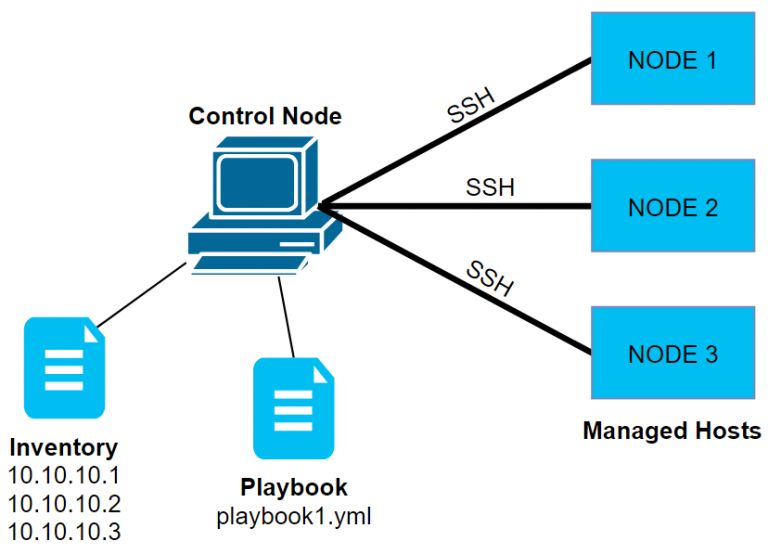Configuration Management: Ansible
 Amitt Ashok
Amitt AshokTable of contents

WHY ANSIBLE:
Let's assume an organization has some servers in the cloud and others on physical hardware, with some running Linux and others running Windows. Without Ansible, maintaining each server would require manually connecting to each one and performing the necessary tasks individually. As the number of servers increases, this process becomes increasingly difficult and chaotic.
For example, if you want to install software like an Apache server or Java, you must ensure that all Linux servers are running the same operating system version. For Windows servers, you would need to use a completely different method. Managing these tasks manually is not only complicated but also prone to errors.
This is where Ansible comes in. Ansible simplifies managing, updating, installing, and configuring servers across different environments, whether they are running on Linux or Windows. With Ansible, you can automate these tasks, ensuring consistency and efficiency across your entire infrastructure.
Now, let's dive deeper into what Ansible is and how it works.
What is Ansible:
Ansible is a comprehensive and powerful automation tool used for:
Provisioning
Configuration management
Application deployment
Network automation
While Ansible can handle various tasks, it is primarily used for configuration management, which will be our focus.
Ansible is an open-source configuration management tool that helps organizations create, update, install, and configure their infrastructure.
It streamlines these processes, making it easier to manage complex environments efficiently.
We use YAML or JSON syntax to write Ansible playbooks or configuration files.
Here, I am using YAML, which is a human-readable format that is easy to write and update.
How Ansible works:
Ansible operates using a Control Node and Managed Node architecture. The Control Node sends or pushes configuration files or playbook files to the Managed Nodes to execute tasks.
To define the Managed Nodes for the Control Node, we create a
inventoryfile (commonlyinventory.ini), where we list the Managed Nodes along with their IP addresses.The playbook. yaml file contains a list of tasks written in YAML syntax, using different modules and ad-hoc commands.
An ad-hoc command is a single-line command used for tasks that are not frequently repeated, such as rebooting a server or managing files and packages. These commands are not reusable. You can visit the official documentation to learn about different ad-hoc commands: https://docs.ansible.com/ansible/latest/command_guide/intro_adhoc.html

- Ansible modules are the basic parts of Ansible playbooks. They are small programs that do specific tasks like installing software, managing services, or handling files on the managed nodes. Ansible modules can be run independently or as part of a playbook.
So in this article, we have covered why Ansible is used, what Ansible is, and also how Ansible works. Tomorrow, we will discuss how authentication works, and then we will check some ad-hoc commands with the first playbook script.
Thank You for the day...
See you soon
Subscribe to my newsletter
Read articles from Amitt Ashok directly inside your inbox. Subscribe to the newsletter, and don't miss out.
Written by

Amitt Ashok
Amitt Ashok
Hey Hi there, Amit here... I love to explore new things and learn new technology.